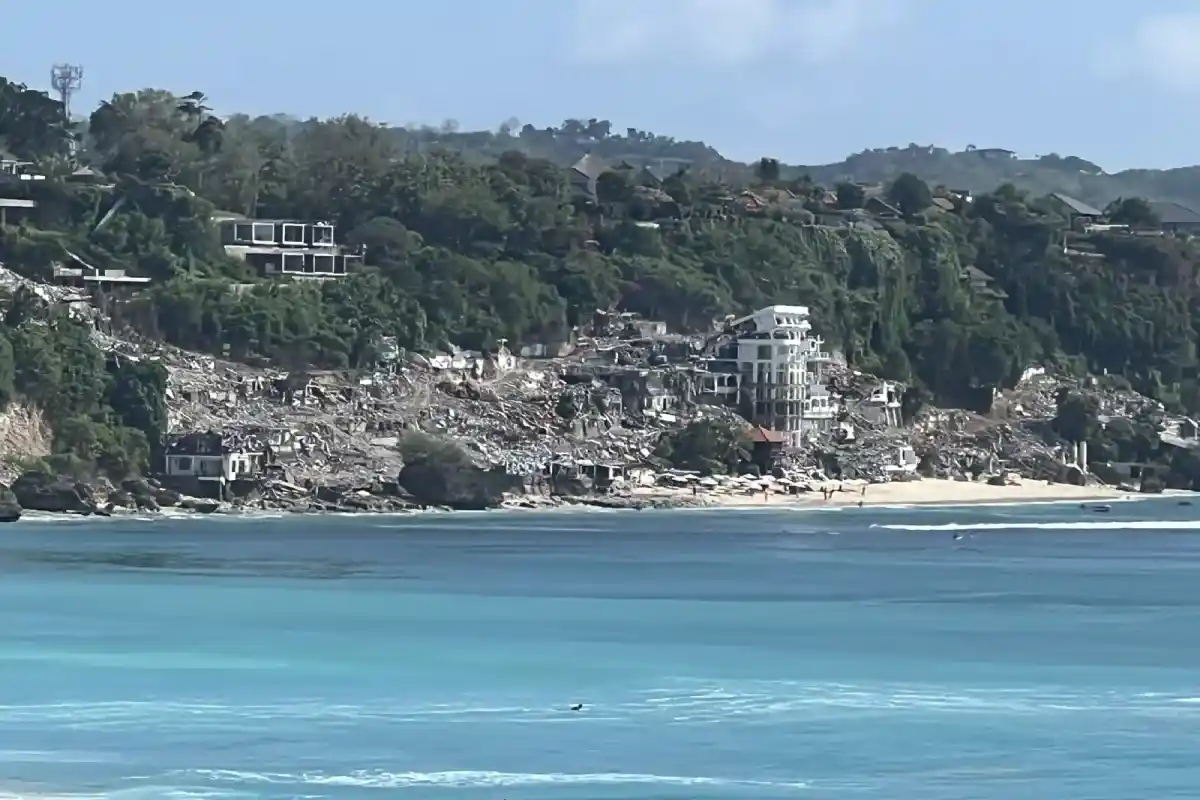The iconic cliffside still attracts visitors, but access to Bingin Beach has changed. Demolition work reshapes paths, blocks shortcuts, and leaves hazards. Treat the descent like a construction approach, not a casual staircase to a postcard cove. Respect Bingin Beach safety concerns and proceed at your own risk.
Contents
Access After Demolition: What You Need To Know
Crews shift fencing and tape as work advances. A route that felt clear in the morning can close by afternoon. Look for posted notices at restaurants and cafes near the cliff before you start down. Ask workers or locals if you are unsure, then choose the cleanest line rather than the fastest.
The main staircase feels steeper than it looks. Dust and grit sit on the treads. Rain makes it worse, turning fine powder into slick paste. Some railings wobble. Take it one step at a time, especially on narrow landings. Space out so only one person occupies each tight section. Keep kids and tired travelers close.
Expect debris on access ledges and beach edges. Broken metal, nails, and small concrete shards can sit under loose sand. Wear sturdy shoes with closed toes and real tread. Avoid flip flops. Stop if you hear tools overhead. Do not pass under active work. A short wait beats a bad fall or a cut foot.
Reading the route in real time
Scan the steps before each move. If you see pooled water, assume slime on concrete. If you see fresh dust, assume less traction. If workers wave you back, listen. If a taped path feels tempting, resist it and pick the official line, even if it adds minutes.
Backup plans for closures
Have a plan B for getting down and up. If the primary staircase closes, you may need to traverse to another exit during a lull. Ask vendors which exits are open that day. Note landmarks as you descend so you can find the same path on the way out.
On The Beach: Debris, Security, and First Aid
Demolition does not stop at the last step. Debris can wash onto the high tide line. Scan the sand before you place bags or towels. Lift boards and straps rather than dragging them. Cuts from steel or coral need proper cleaning fast. Carry a small kit with saline, gauze, and antiseptic wipes.
Keep valuables on you. Petty theft happens when phones and wallets sit unattended. Use a dry bag with a strap and keep it within reach. Park scooters in visible spots and remove helmets and small items. If a vendor offers to watch your bag, still keep the essentials with you.
Nearest medical care sits in Uluwatu, about 15 minutes away by road. Save the clinic number. Photograph your passport, insurance card, and policy details. Many policies need a sports upgrade for surfing. Confirm this before you travel.
Water Hazards: Tides, Coral, and Sudden Sets
There are no lifeguards at Bingin Beach. You swim and surf at your own risk. Water conditions change with tide and swell. At lower tides, shallow reef sits close to the surface. At mid tide, waves can pitch fast and trap swimmers inside. Slippery coral plates near the key entry points punish poor timing.
Watch the sets from shore first. Count the rhythm, then pick an entry during a clear lull. Keep your feet off the coral. Use small, committed strokes and avoid pauses above sharp reef. If a set stacks, reverse course and wait it out rather than forcing an exit.
Surfing Suitability: Honest Level Check
Bingin suits advanced surfers most days. The takeoff is steep, the pocket is tight, and sections race. Crowds add more fiberglass to dodge. A misstep can send you onto shallow shelves. Respect locals, call your line, and yield if you are late.
Beginners should only surf here with guidance and at higher tides. Hire a trusted local coach who knows channels, sweep patterns, and safe exits. If the tide drains or the wind shifts cross, end the session. You can always try again on a better tide.
Five Key Checks Before You Commit
| Issue | Red flag | Action |
|---|---|---|
| Access | Barriers up | Wait |
| Stairs | Wet dust | Step slow |
| Debris | Metal shards | Reroute |
| Tide | Draining fast | Delay |
| Security | Unattended bags | Keep on you |
Weather, News, and Local Signals
Conditions shift quickly. Rain turns dust into slime and sends debris onto steps. Wind swings cross and ruins exits. Check tide charts and wind the night before. On the day, scan local updates for demolition pauses or route changes. If locals advise you to wait, do it. Their read of the cliff and swell saves time and risk.
Last Checks Before You Go
Pack sturdy shoes, a small first aid kit, reef safe sunscreen, and a strap for your bag. Photograph your documents and policy details. At the top, choose the cleanest marked route. On the stairs, move slow and steady. On the beach, keep valuables with you. In the water, pick a safe tide and a clear lull. If anything feels off, stand down and enjoy the view. Access will improve, but your safety cannot wait.
